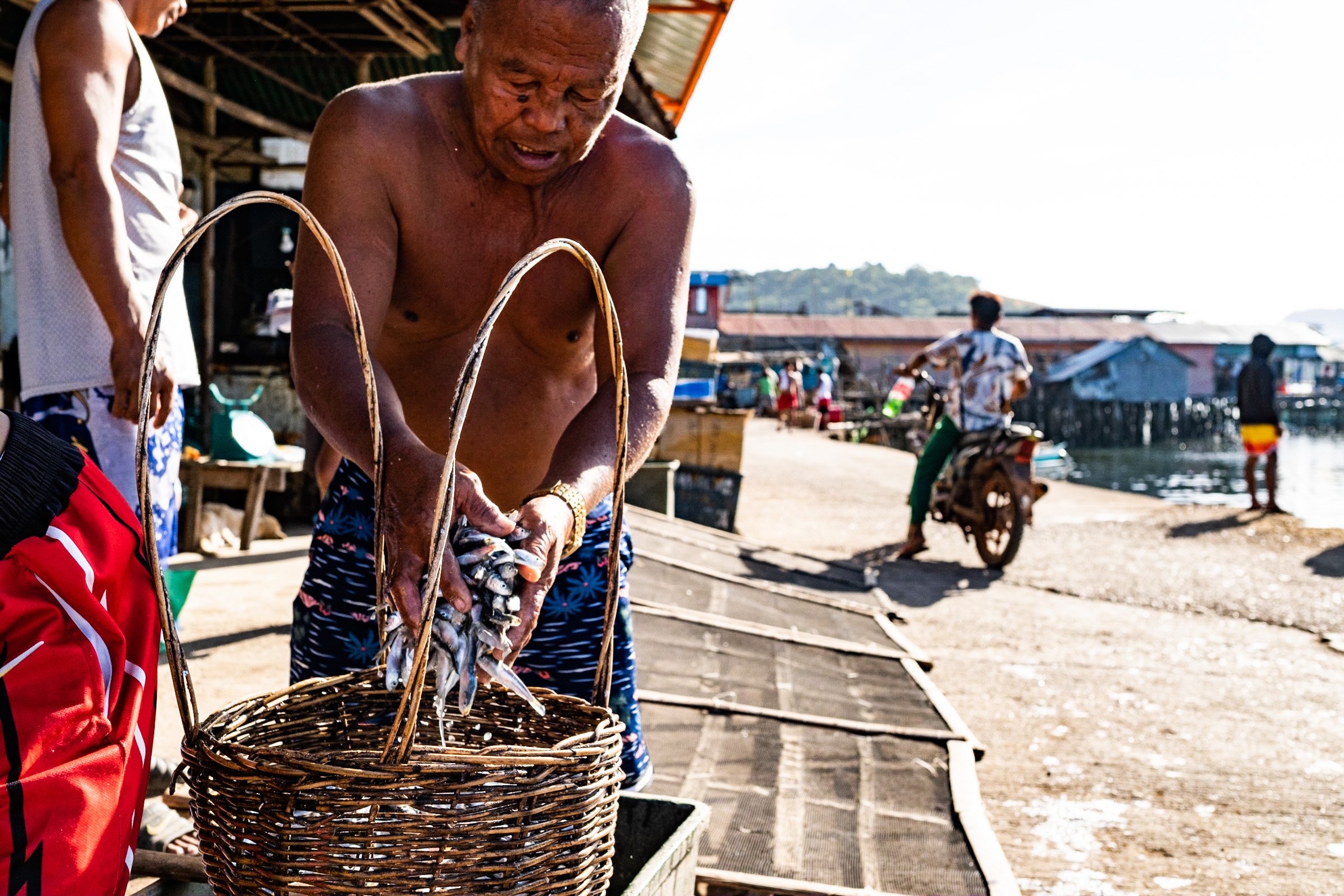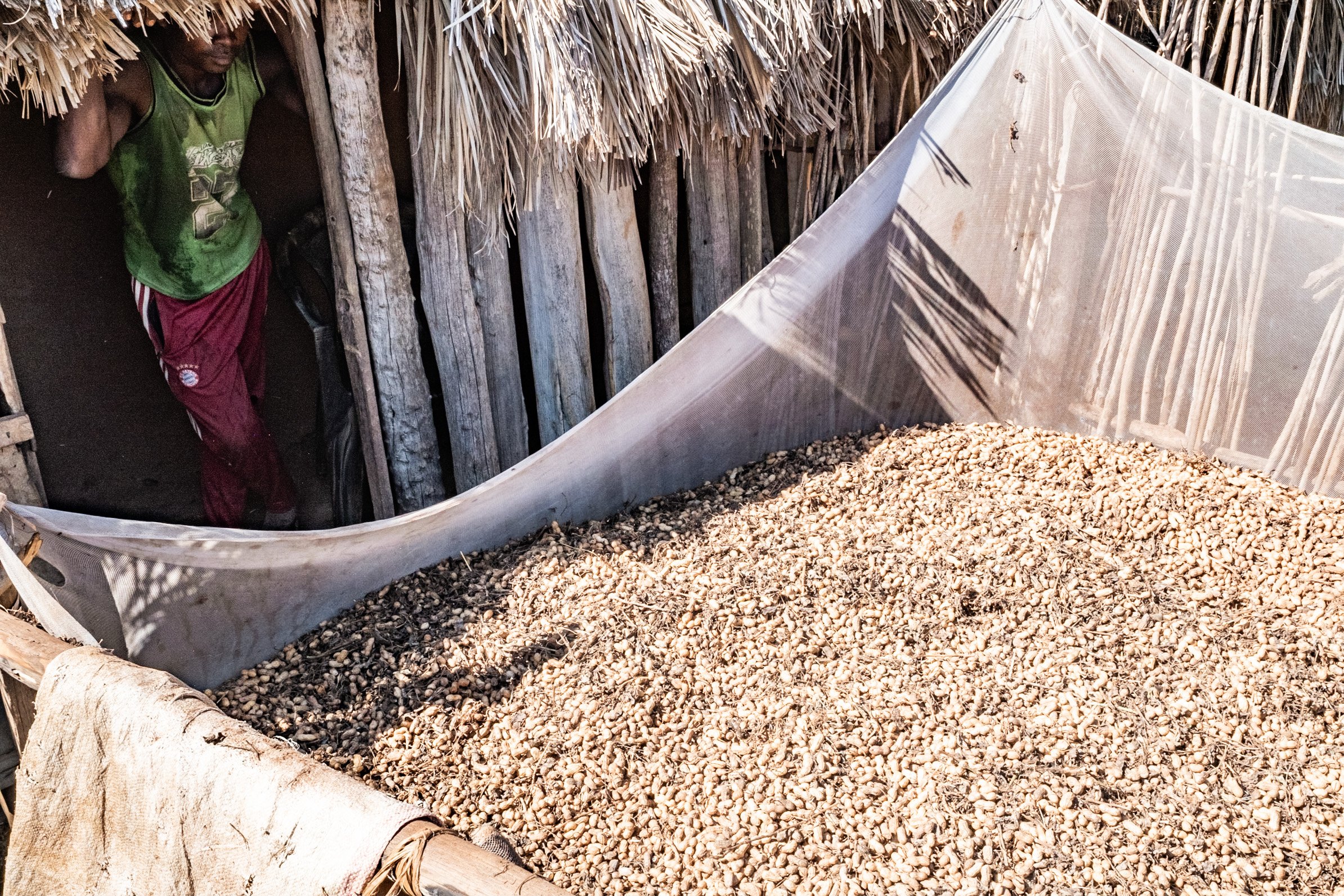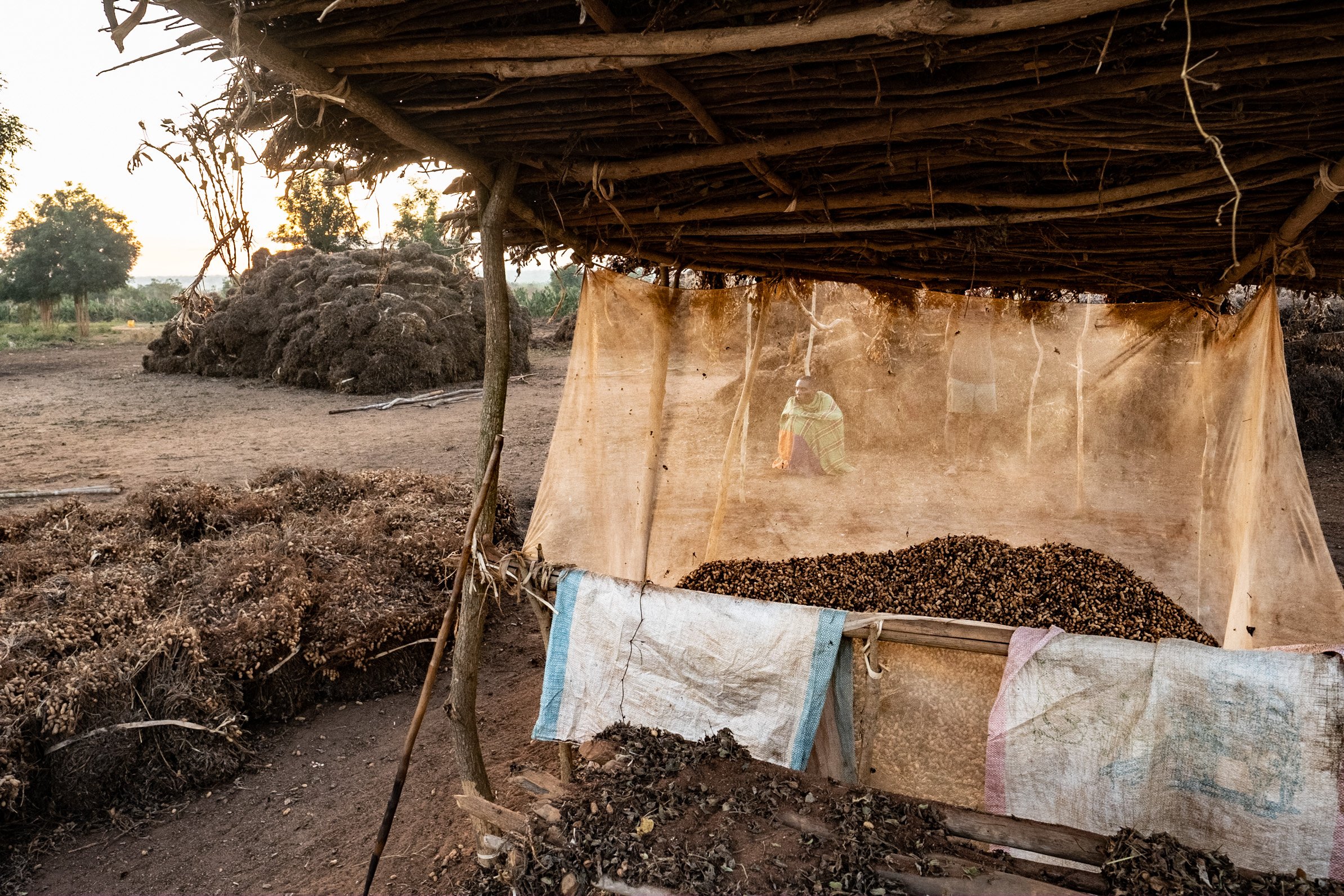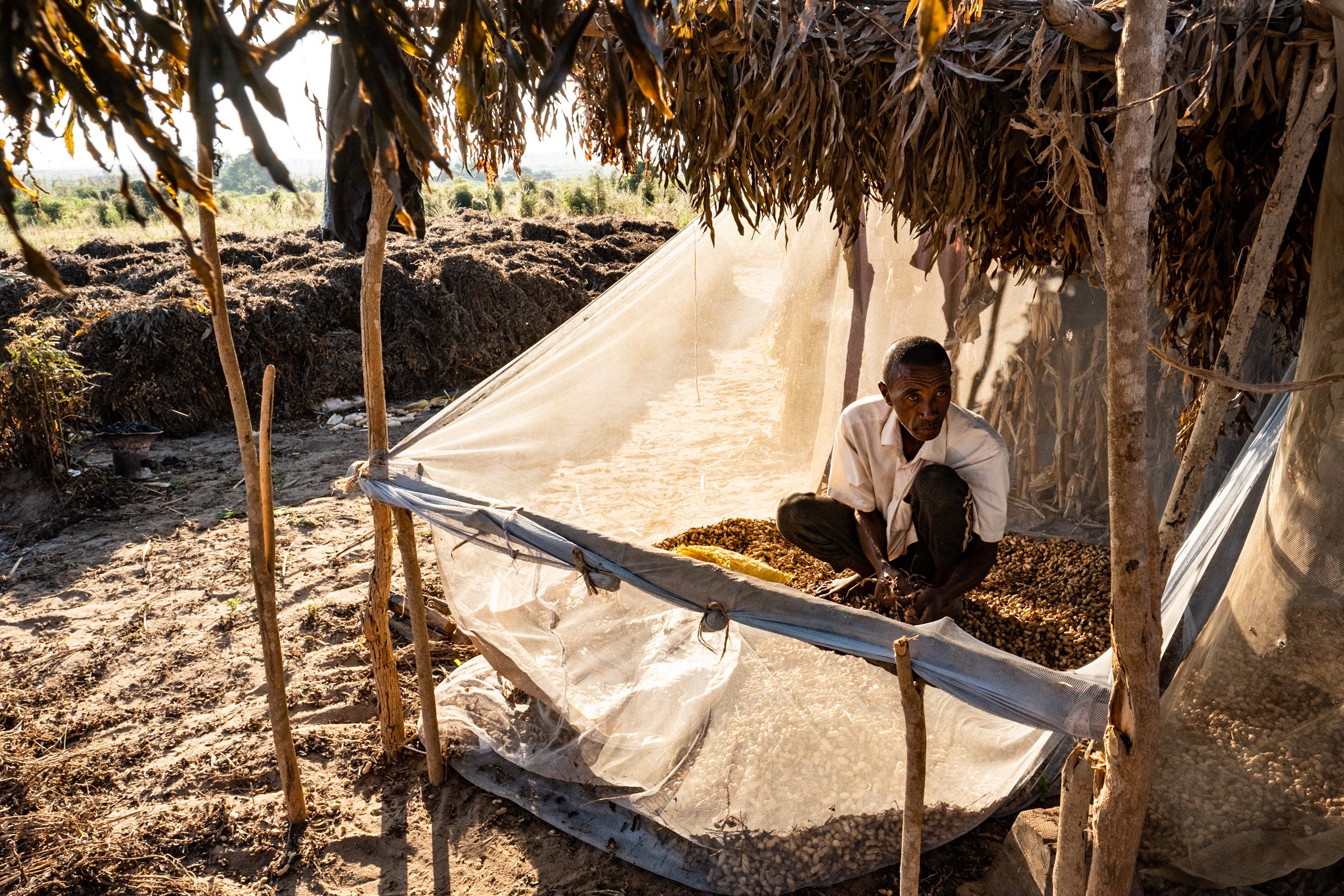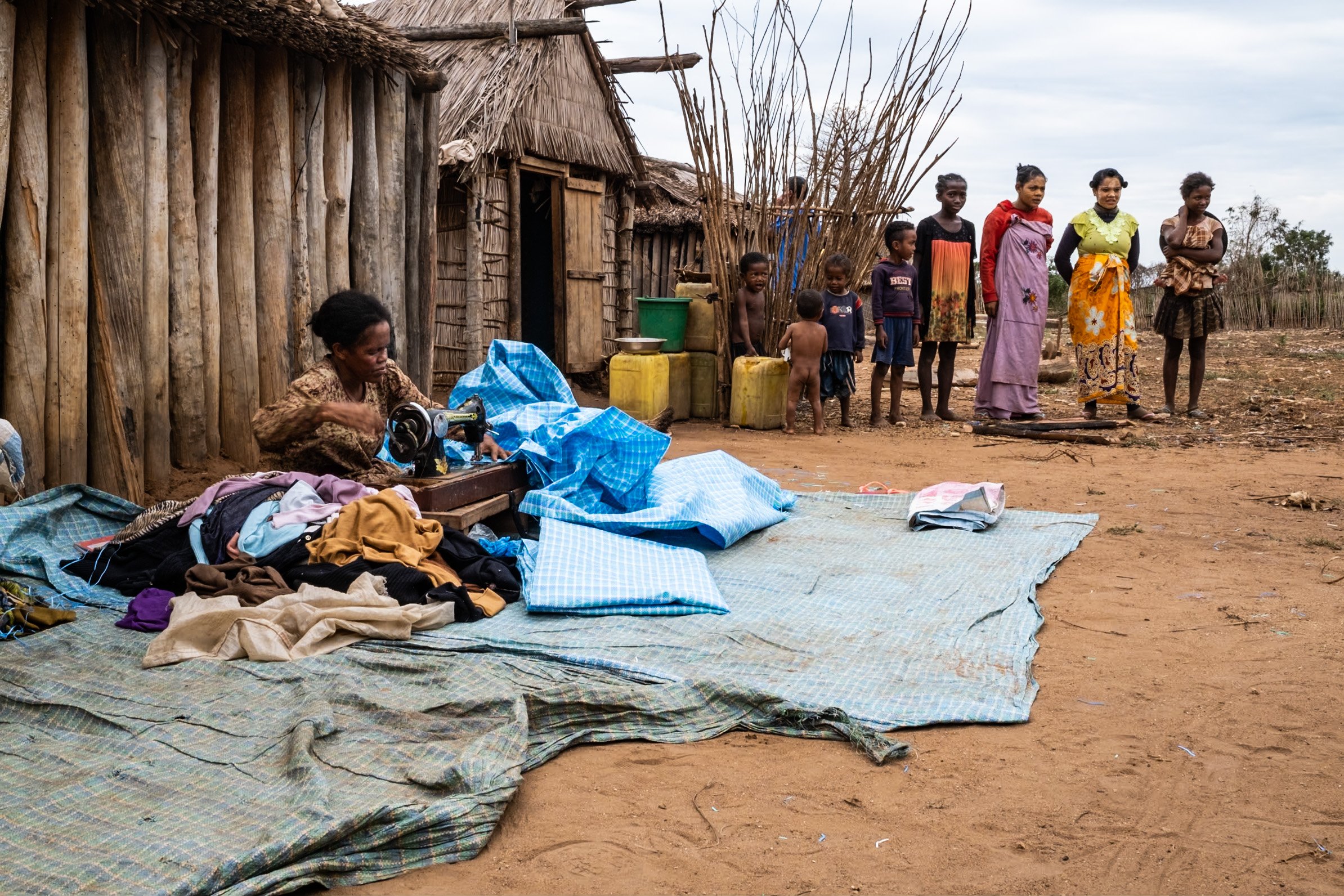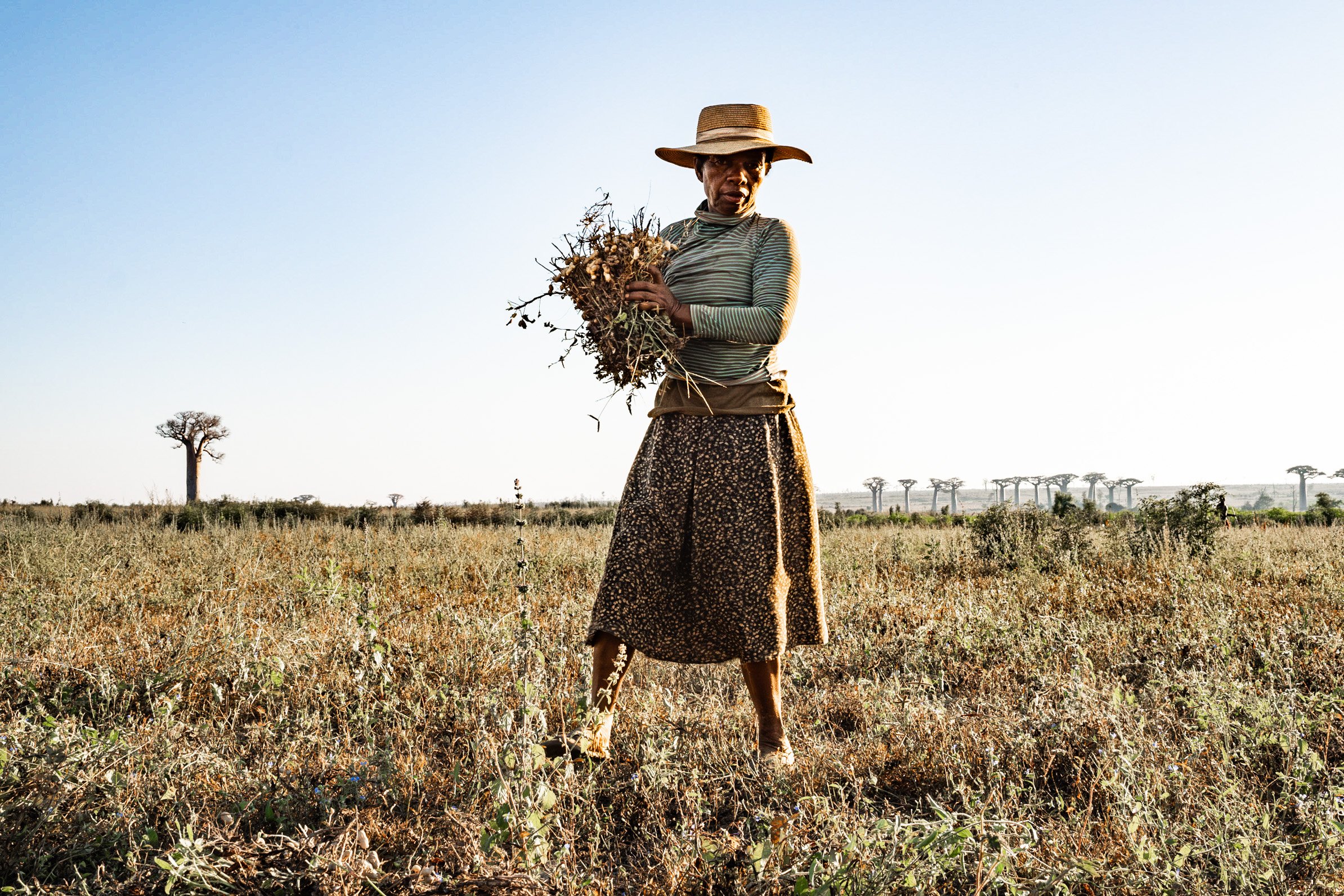
IMAGE LIBRARY AND RESEARCH DOCUMENTATION FOR USAID
For the first half of 2023 we traveled with USAID to three different global sites looking at the impacts and effectiveness of the United States’ investments in biodiversity conservation. The results, which have so far included presentations, exhibitions, photo essays, participatory photography workshops and extensive reports, provide a rare lookback for anyone interested in conservation practices. The results proved to be an important document brought to life with visuals and anecdotal reporting:
The full report, “Learn, Adapt, Repeat: Lessons from a Decade of Practicing Adaptive Management to Improve Biodiversity Conservation”
A video on the Story Collaborative participatory photography workshops
Individual Photo Story Introductions:
Rufino Pagsuguiron (right) and other local fishers earn extra income providing boat trips for tourists to Siete Pecados Marine Park. Ecotourism is a conservation enterprise intended to reduce fishing pressure in the nearshore environment. Coron, Palawan, Philippines. February 2023. Photograph by Jason Houston for USAID.
Kiosks in the local community selling drinks and snacks benefit from increased ecotourism at Siete Pecados Marine Park. Ecotourism is a conservation enterprise intended to reduce fishing pressure in the nearshore environment. Coron, Palawan, Philippines. February 2023. Photograph by Jason Houston for USAID.
Marlon is a fisherman and boat maker who also takes ecotourists on day trips to nearby Siete Pecados Marine Park. The incease in ecotourism has helped grow his boat making business as well as his personal awareness of environmental issues. Coron, Palawan, Philippines. February 2023. Photograph by Jason Houston for USAID.
Lando (left) is a fisherman who also works as a tour guide making day trips to Siete Pecados Marine Park. Elias Ruta (right) is a life-long fisherman who now works as a tour guide and ranger for Siete Pecados Marine Park. Ecotourism is a conservation enterprise intended to reduce fishing pressure in the nearshore environment. Coron, Palawan, Philippines. February 2023. Photograph by Jason Houston for USAID.
Elias Ruta is a life-long fisherman who now works as a tour guide and ranger for Siete Pecados Marine Park. Ecotourism is a conservation enterprise intended to reduce fishing pressure in the nearshore environment. Coron, Palawan, Philippines. February 2023. Photograph by Jason Houston for USAID.
Franse Balile is one of many who has come from other areas of the Philippines to Coron to work in the growing ecotourism industry. Coron, Palawan, Philippines. February 2023. Photograph by Jason Houston for USAID.
Lena Sabuito has lived in Coron for over 40 years and has been drying fish for a living for over 30 years. She has recently learned how to improve her process, making the fish cleaner and adding flavors, both of which makes it easier to sell to tourists. Coron, Palawan, Philippines. February 2023. Photograph by Jason Houston for USAID.
Juvenile sardines are brined and then dried at a small port where local fishers bring their catch to sell to local buyers. Coron, Palawan, Philippines. February 2023. Photograph by Jason Houston for USAID.
A small port where local fishers bring their catch to sell to local buyers. Coron, Palawan, Philippines. February 2023. Photograph by Jason Houston for USAID.
Luzviminda Antonio unloads sardines at a small port where local fishers bring their catch to sell to local buyers. Coron, Palawan, Philippines. February 2023. Photograph by Jason Houston for USAID.
Dried sardines purchased for PhP100 (less than US$2) at a small port where local fishers bring their catch to sell to local buyers. Coron, Palawan, Philippines. February 2023. Photograph by Jason Houston for USAID.
Frank Bagalay brines and then dries juvenile sardines at a small port where local fishers bring their catch to sell to local buyers. Coron, Palawan, Philippines. February 2023. Photograph by Jason Houston for USAID.
The mangroves near Siete Pecados Marine Park are the site of a restoration project managed by the Shalom Women's Biodiversity Conservation Association. The project taught the women administration and financial managment skills that they are now applying to other enterprises in their community. Coron, Palawan, Philippines. February 2023. Photograph by Jason Houston for USAID.
Maritza Bolivar preparing yuca. Comunidad Nativa Sinchi Roca, Ucayali, Peru. April 2023. Photograph by Jason Houston for USAID.
Morning scenes on the Rio San Alejandro. Comunidad Nativa Sinchi Roca, Ucayali, Peru. April 2023. Photograph by Jason Houston for USAID.
Members of Sinchi Roca's forest control and surveillance committee typically spend a week in the field patrolling conservation areas adjacent to the community documenting any issues or concerns such as illegal logging or coca farming land invasions. Comunidad Nativa Sinchi Roca, Ucayali, Peru. April 2023. Photograph by Jason Houston for USAID.
Toribio Tuesta Rios prunes the Cacao (Theobroma cacao L.) trees in his agroforestry plot. Cacao is an important agroforestry crop for conservation efforts because it is native, grows in the shade of other native trees, and is a relatively high-value harvest. Comunidad Nativa Sinchi Roca, Ucayali, Peru. April 2023. Photograph by Jason Houston for USAID.
Marlene Gonzalez sweeps the room used by a women's group that produces native handicrafts from locally harvested seeds and other materials and clothing made with designs from traditional practices of dye-making, painting, and embroidery. Selling crafts provides extra income in the short-term, which motivates planting of native species that provide materials and forest protection. Comunidad Nativa Sinchi Roca, Ucayali, Peru. April 2023. Photograph by Jason Houston for USAID.
Josue Bolivar sits with a group of men making traditional arrows made from chonta palm, macaw feathers, copal, and other natural materials collected from the forests. The bows and arrows are still used for hunting but are also important for their cultural identity in ceremonial activities and sold regionally as handicrafts. Conservation enterprises using local natural materials incentivize protecting the forests. Comunidad Nativa Sinchi Roca, Ucayali, Peru. April 2023. Photograph by Jason Houston for USAID.
A pet baby howler monkey. Comunidad Nativa Sinchi Roca, Ucayali, Peru. April 2023. Photograph by Jason Houston for USAID.
Nelvis Gutierrez (left background), Nelio Bolivar (right background), Sarita Rengifo (forground), and Mia Bolivar (child) making masato. Masato is a traditional naturally fermented drink made from chewed yuca and sometimes with other added ingredients for color and flavor. Comunidad Nativa Sinchi Roca, Ucayali, Peru. April 2023. Photograph by Jason Houston for USAID.
Amao Perez Fernandez participates in many conservation-focused efforts in his community ranging from the forest control and surveillance committee to teaching innovative sustainable agroforestry techniques with other communities. Comunidad Nativa Sinchi Roca, Ucayali, Peru. April 2023. Photograph by Jason Houston for USAID.
Peanuts separated from the peanut plants ready to be bagged and transported to market. Improvements in growing peanuts is a conservation enterprise intended to reduce pressure to clear nearby forests. Kirindy Village, Madagascar. May 2023. Photograph by Jason Houston for USAID.
Mahasoa, aka "Tsikapy", saved income from growing and selling peanuts through a local cooperative to buy chickens that he raises commercially for extra income. Improvements in growing peanuts and raising chickens are conservation enterprises intended to reduce pressure to clear nearby forests. Kirindy Village, Madagascar. May 2023. Photograph by Jason Houston for USAID.
Goats return from grazing at the end of the day. Kirindy Village, Madagascar. May 2023. Photograph by Jason Houston for USAID.
Peanuts being unloaded at and purchased by the Firaisankina Peanut Cooperative. As a result of increased risk of robbery, some farmers carry guns or hire soldiers when transporting their peanuts. Improvements in growing peanuts is a conservation enterprise intended to reduce pressure to clear nearby forests. Kirindy Village, Madagascar. May 2023. Photograph by Jason Houston for USAID.
Mahasoa, aka "Tsikapy", keeps track of peanuts purchased from other farmers by the Firaisankina Peanut Cooperative. Improvements in growing peanuts is a conservation enterprise intended to reduce pressure to clear nearby forests. Beraketa Village, Madagascar. May 2023. Photograph by Jason Houston for USAID.
Separating peanuts from the peanut plants in preparation for transport to market. Improvements in growing peanuts is a conservation enterprise intended to reduce pressure to clear nearby forests. Kirindy Village, Madagascar. May 2023. Photograph by Jason Houston for USAID.
Fegy harvesting peanuts. Improvements in growing peanuts is a conservation enterprise intended to reduce pressure to clear nearby forests. Kirindy Village, Madagascar. May 2023. Photograph by Jason Houston for USAID.
Monja Mahaefra, aka "Dadilahy", separating peanuts from the peanut plants in preparation for transport to market. Improvements in growing peanuts is a conservation enterprise intended to reduce pressure to clear nearby forests. Kirindy Village, Madagascar. May 2023. Photograph by Jason Houston for USAID.
Monja Mahaefra, aka "Dadilahy", separating peanuts from the peanut plants in preparation for transport to market. Improvements in growing peanuts is a conservation enterprise intended to reduce pressure to clear nearby forests. Kirindy Village, Madagascar. May 2023. Photograph by Jason Houston for USAID.
The local market at sunset in Kirindy Village. Kirindy Village, Madagascar. May 2023. Photograph by Jason Houston for USAID.
A red-fronted lemur (Eulemur rufifrons) in Kirindy Mitea National Park, Madagascar. May 2023. Photograph by Jason Houston for USAID.
Filaorinx, aka "Davondraky", weighs peanuts being unloaded at and purchased by the Firaisankina Peanut Cooperative. Kirindy Village, Madagascar. May 2023. Photograph by Jason Houston for USAID.
Vorombesae is putting her 15 children through school sewing dresses and other products for sale in the local market. Kirindy Village, Madagascar. May 2023. Photograph by Jason Houston for USAID.












